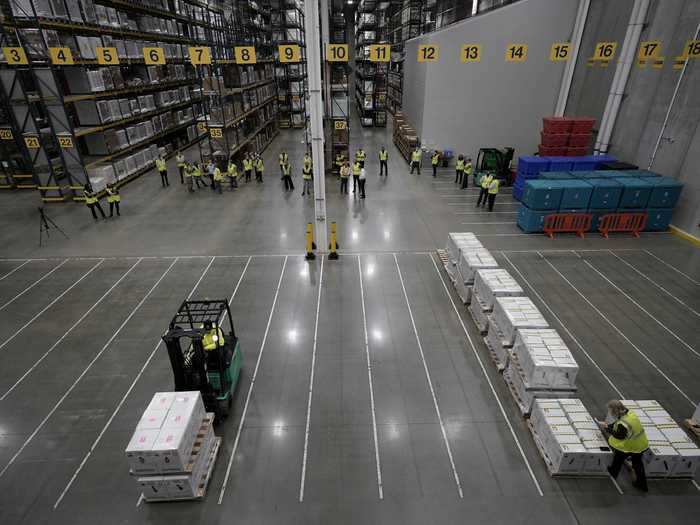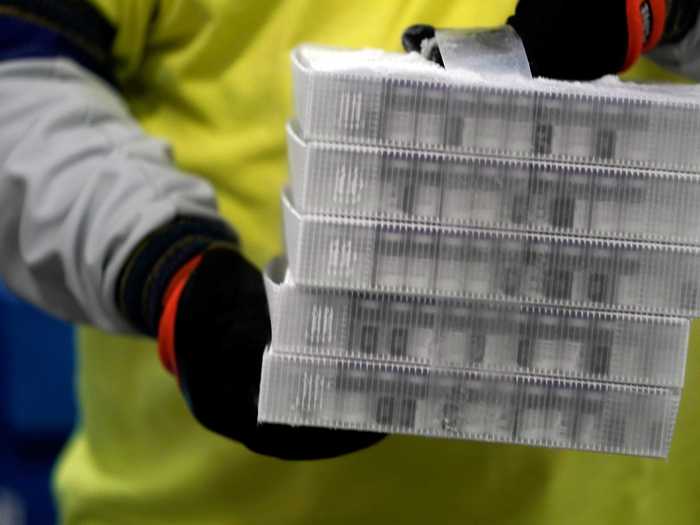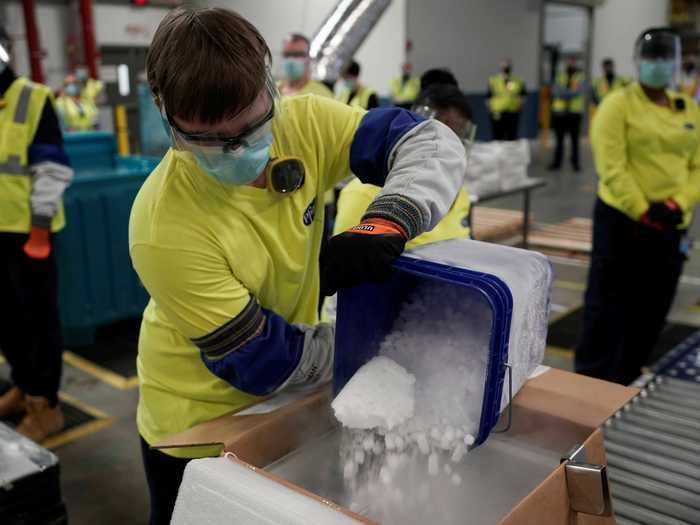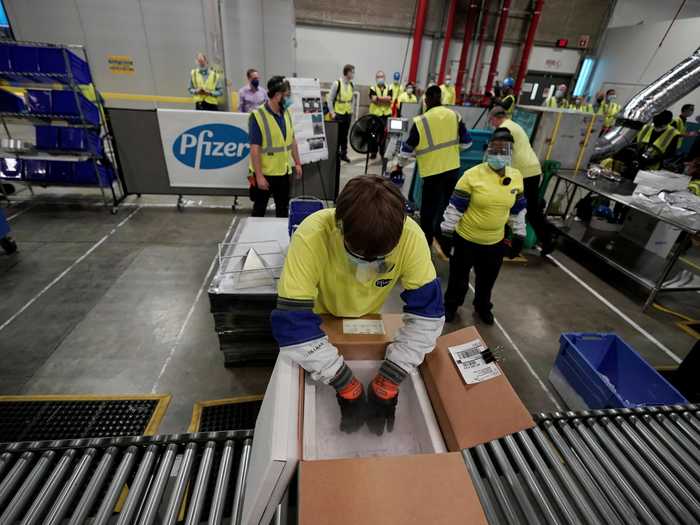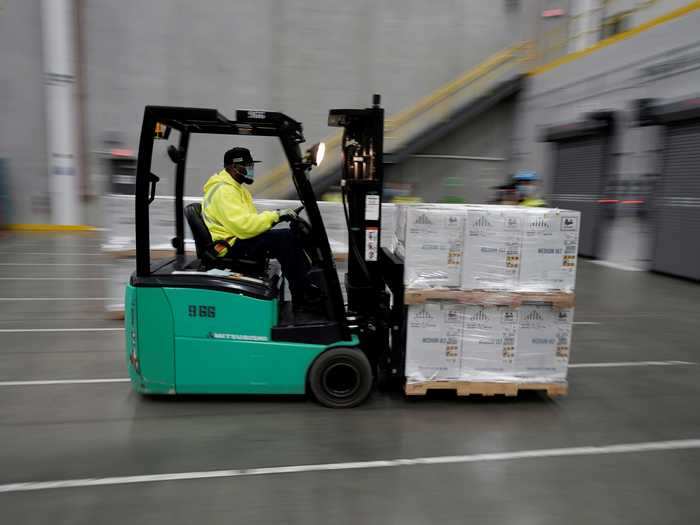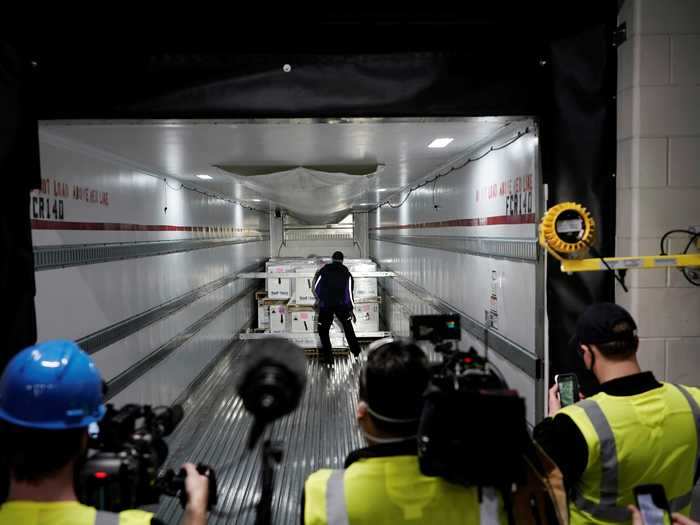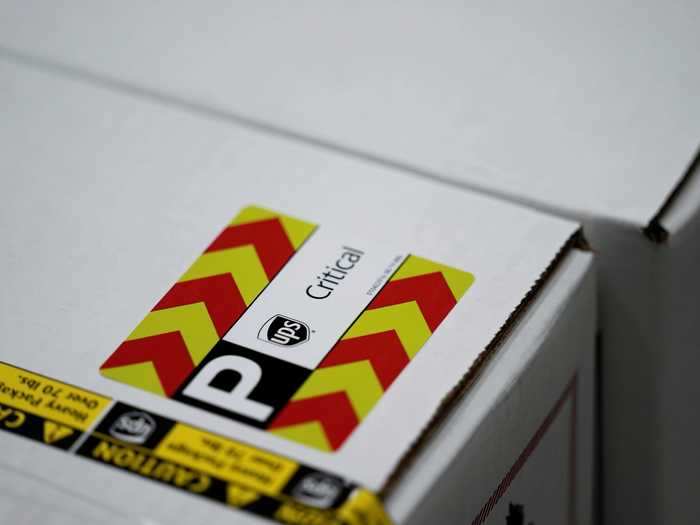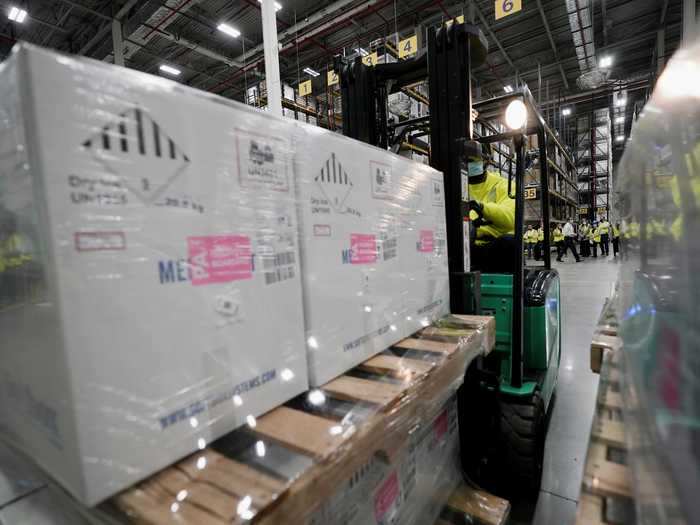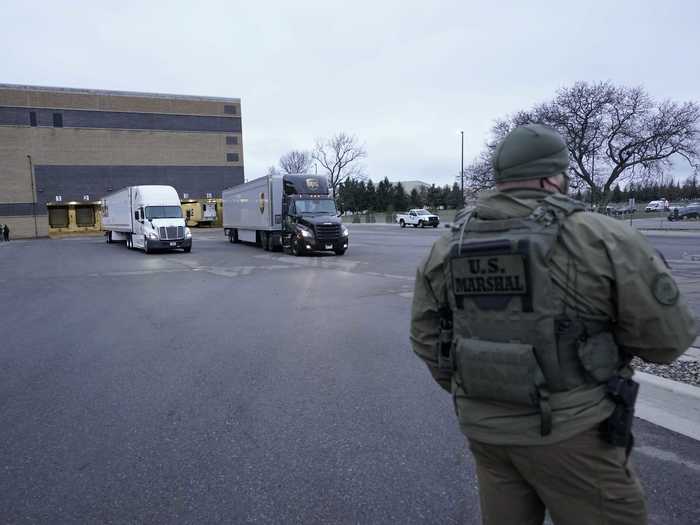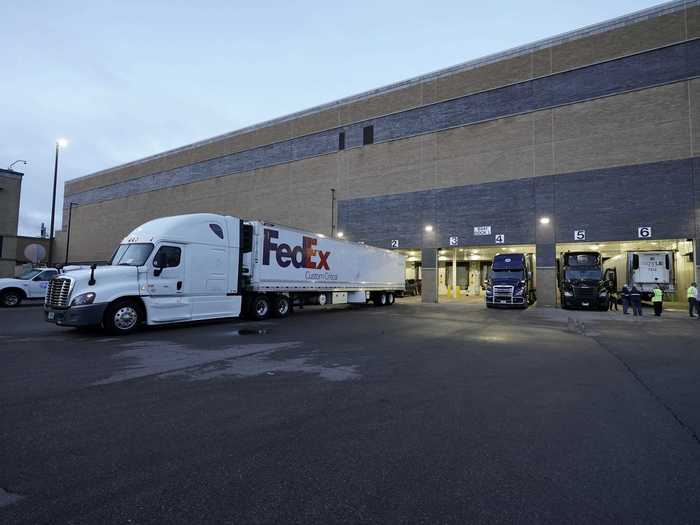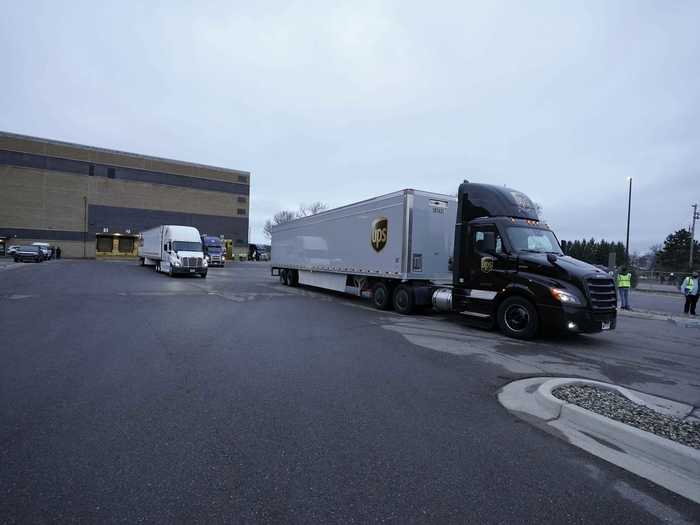Boxes containing the Pfizer-BioNTech COVID-19 vaccine are prepared to be shipped at the Pfizer Global Supply Kalamazoo manufacturing plant in Portage, Michigan, December 13, 2020.AP/Morry Gash/Pool
- On Sunday, workers at Pfizer's Michigan warehouse began packaging and loading COVID-19 vaccines onto trucks.
- The process includes covering vaccines in dry ice, labeling them with VIP tags, and loading them into freezers before drivers and security escorts took them to their final locations.
- Every US state on Monday will receive vaccine doses to give the most at-risk people, including frontline workers and people over 65. See how the doses were packed, loaded, and rolled out.
Following the FDA's Friday approval of Pfizer's COVID-19 vaccine, the first to be distributed across the US, the pharmaceutical company opened its Michigan-based packaging facility to send out the long-awaited doses.
In Portage, Michigan, a city between Detroit and Chicago, UPS and FedEx trucks lined up at Pfizer's warehouse to be filled with vials of the COVID-19 vaccine.
There, facility workers handled briefcases full of the vaccine with care, filled boxes with dry ice to keep the cocktails ice-cold, and used forklifts to carry thousands upon thousands of doses onto trucks and planes, which are set to arrive in all US states by Monday.
Here's a look into Pfizer's COVID-19 vaccine packing and shipping process.
Around 6:30 AM on Sunday, December 13, mask-clad workers gathered at the Pfizer warehouse in Portage, Michigan, to package and load the COVID-19 vaccine.
AP/Morry Gash/Pool
Between thousands and hundreds of thousands of doses will be disseminated to each state by Monday, with the first doses given to frontline workers, essential workers, people older than 65, and those who are immunocompromised.
Boxes containing the Pfizer-BioNTech COVID-19 vaccine are prepared to be shipped at the Pfizer Global Supply Kalamazoo manufacturing plant in Portage, Mich., Sunday, Dec. 13, 2020.
AP/Morry Gash/Pool
Before each box full of vaccines is sealed, workers must cover the material in dry ice. That's because the vaccine must stay at -94 degrees Fahrenheit to remain effective.
AP/Morry Gash/Pool
Some vaccines are being sent in specially-built industrial freezers to keep the cocktails chilly and ready-to-use when they arrive at hospitals and pharmacies.
Boxes containing the Pfizer-BioNTech COVID-19 vaccine are prepared to be shipped at the Pfizer Global Supply Kalamazoo manufacturing plant in Portage, Michigan, U.S., December 13, 2020.
AP/Morry Gash/Pool
Once the vaccines are nestled in boxes, warehouse workers use machinery to load them onto trucks. The trucks will either head to various locations themselves, or drive to planes that are tasked with taking the vaccines to more distant locations.
AP/Morry Gash/Pool
After loading the first truck with COVID-19 vaccines in the wee morning hours, workers clapped and cheered.
AP/Morry Gash/Pool
UPS and FedEx are handling air and land transit for Pfizer's COVID-19 vaccine distribution. Both companies said they'll prioritize shipping millions of vaccine doses ahead of holiday gift shipping.
Vaccines gets a special label to signify their high-priority nature. They also come with GPS tracking to ensure safe arrival to each state.
AP/Morry Gash/Pool
Operation Warp Speed chief adviser Dr. Moncef Slaoui said 20 million Americans should have access to two doses of the vaccine by the end of December. This number includes the Moderna vaccine, which the FDA is expected to approve this week.
AP/Morry Gash/Pool
Security guards will escort truck drivers to ensure the vaccines get to their final locations.
Reuters/Morry Gash/Pool
Shipments of the vaccine, which was shown to be 95% effective after two doses in clinical trials, will initially go to 600 locations across the US.
AP/Morry Gash/Pool
"Today, we're not hauling freight, we're delivering hope," Andrew Boyle, co-president of Boyle Transportation, told Reuters. UPS hired Boyle Transportation to move some of the vaccine supply to Lansing, Michigan, where planes waited to load the precious cargo.
AP/Morry Gash/Pool

